ParadeDB: Use the power of Postgres DB for your real-time search and data analytics (and more)
 Nicolás Georger
Nicolás Georger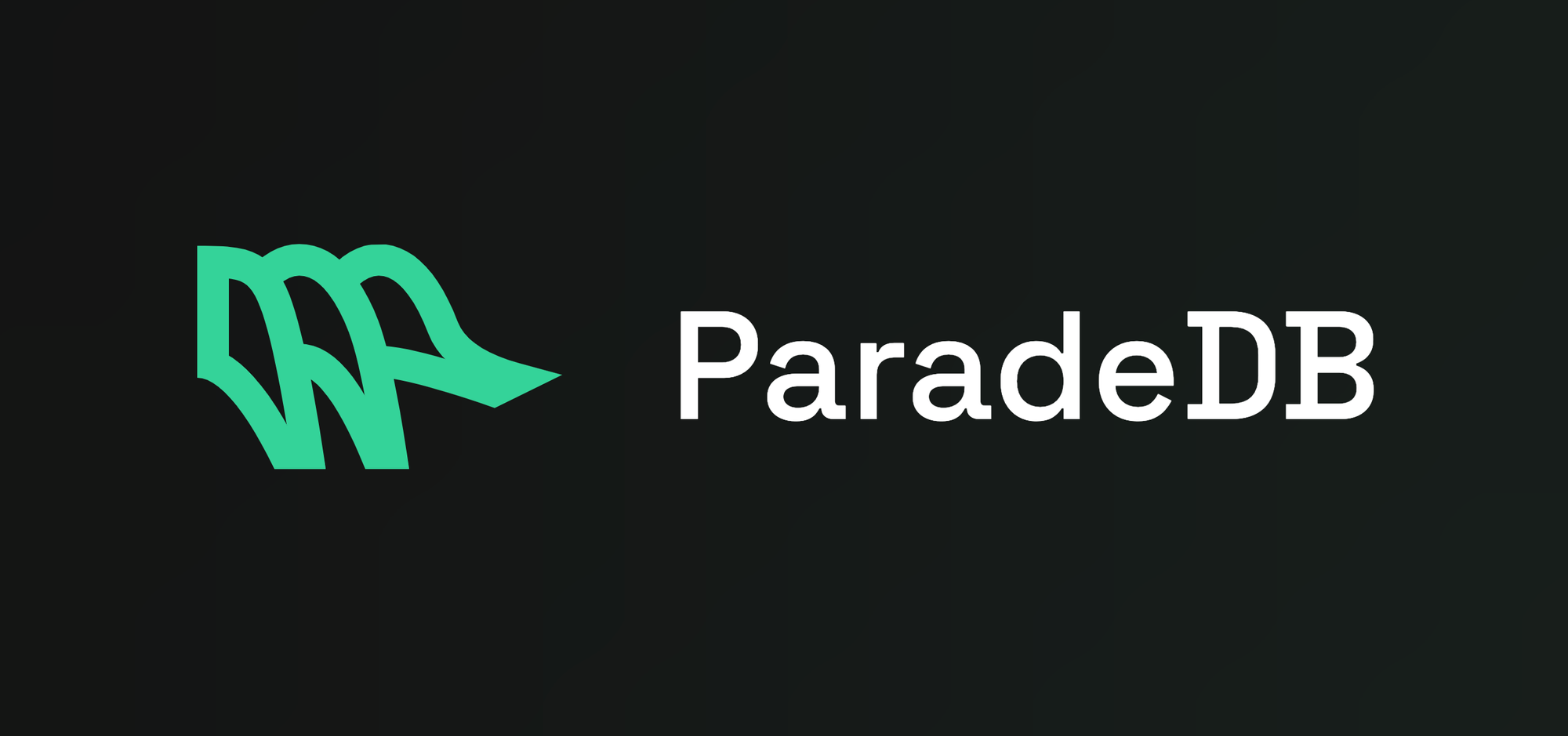
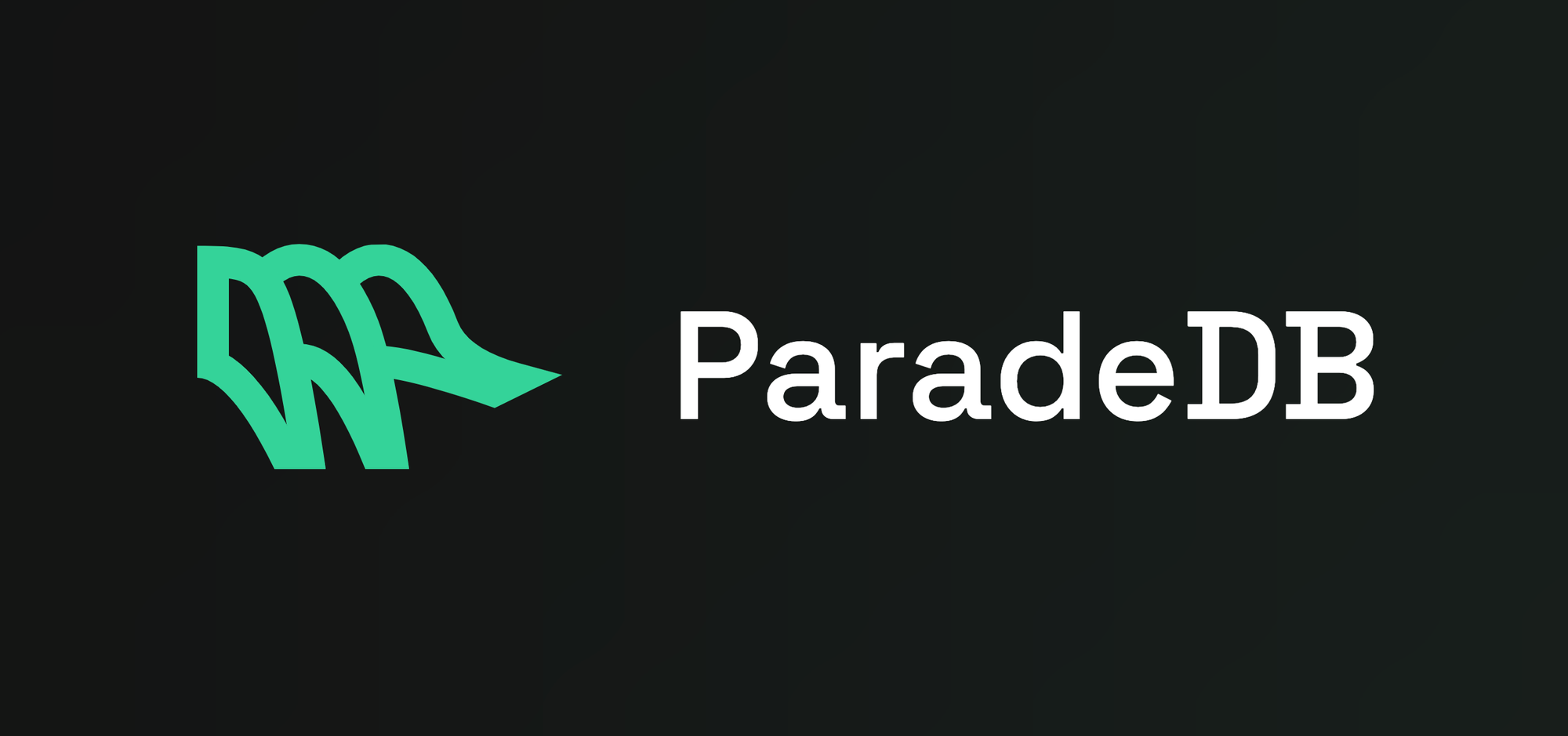
ParadeDB is shaking things up in the world of search and analytics by offering a compelling Postgres-based alternative to Elasticsearch. This article dives into ParadeDB's features, how it stacks up against Elasticsearch, and why you should keep an eye on this emerging technology.
ParadeDB: Riding the Postgres Wave
Remember when Elasticsearch was the new kid on the block, promising blazing-fast search without the baggage of traditional databases? Well, the times they are a-changin'! ParadeDB enters the scene, leveraging the rock-solid foundation of PostgreSQL to deliver real-time search and analytics.
ParadeDB isn't just another SQL vs. NoSQL debate rehash. It cleverly harnesses Postgres' extensibility, bolting on powerful features like full-text search with BM25 (using pg_search), dense and sparse vector search (courtesy of pgvector and pgvectorscale), and even hybrid search capabilities. And for the analytics enthusiasts, ParadeDB integrates pg_lakehouse to provide an analytical query engine that can handle a variety of data formats and object stores.
Deployment Options: From Your Laptop to the Cloud
One of ParadeDB's strengths is its deployment flexibility. Feeling adventurous? Grab their Docker image and have a test instance running in minutes. Prefer the control of a Kubernetes cluster? No problem, they've got a Helm chart for that. While a managed cloud offering is still on the horizon (join their waitlist!), ParadeDB makes it straightforward to get up and running on your own infrastructure.
Going Head-to-Head with Elasticsearch: A Question of Tradeoffs
So, how does ParadeDB really measure up against the reigning champ, Elasticsearch? Here's the lowdown:
ParadeDB Advantages
Elasticsearch Advantages
Familiarity (Postgres experience)
Maturity and Ecosystem (larger community)
ACID Properties (data consistency)
Scalability (horizontal, massive datasets)
SQL Power (search & analytics)
Specialized Features (search & analytics)
Keep Your Eyes on the Prize: The Future of ParadeDB
ParadeDB is still in its early stages (currently in Public Beta), but it's already making waves. The team is actively developing new features, such as a column-oriented table access method for faster analytics within Postgres and support for high-volume data ingestion from sources like Kafka.
If you're looking for a robust, Postgres-backed alternative to Elasticsearch, ParadeDB is definitely worth a closer look. Its tight integration with the Postgres ecosystem, combined with its ease of deployment and commitment to open source, makes it an exciting contender in the search and analytics space.
Links:
[
GitHub - paradedb/paradedb: Postgres for Search and Analytics
Postgres for Search and Analytics. Contribute to paradedb/paradedb development by creating an account on GitHub.

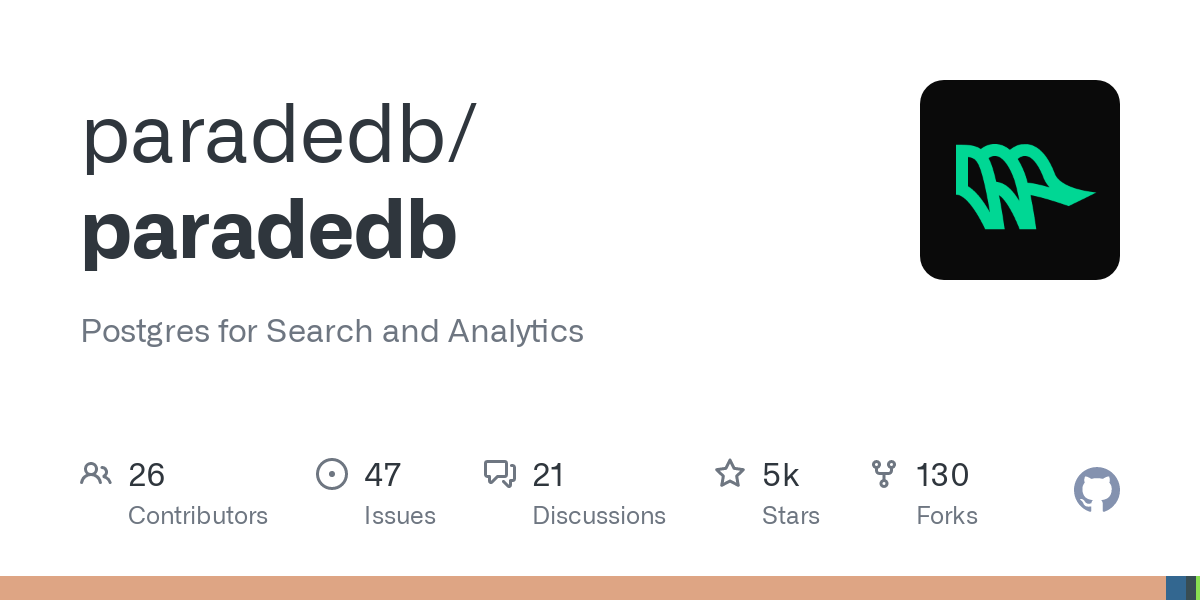
](https://github.com/paradedb/paradedb?ref=sredevops.org)
[
GitHub - paradedb/paradedb: Postgres for Search and Analytics
Postgres for Search and Analytics. Contribute to paradedb/paradedb development by creating an account on GitHub.

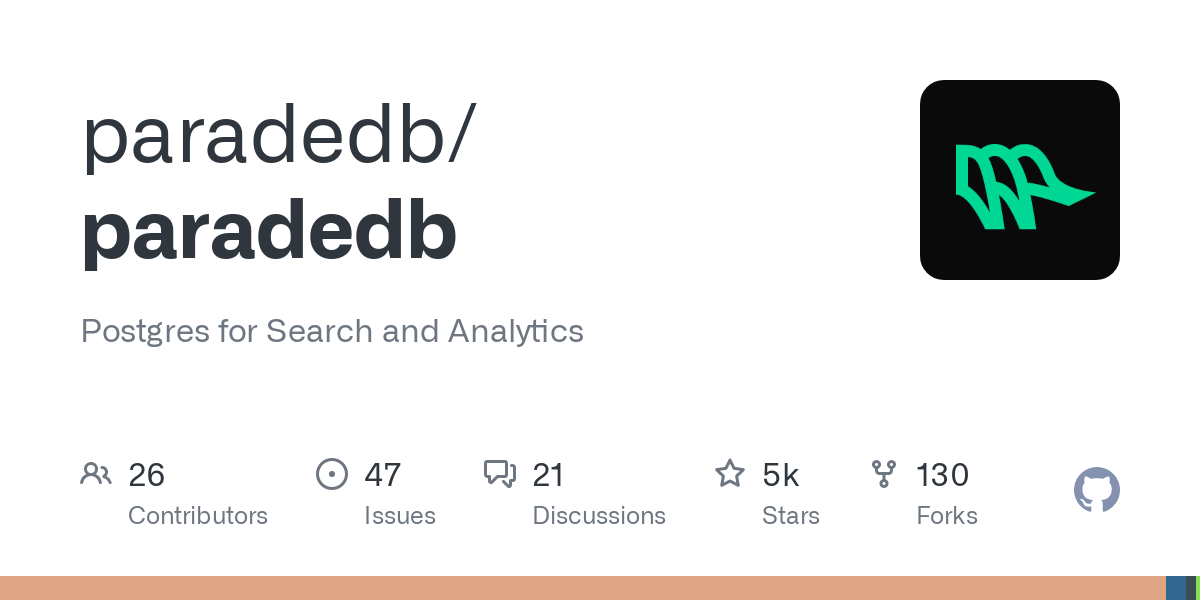
](https://github.com/paradedb/paradedb?ref=sredevops.org)
[
Welcome to ParadeDB - ParadeDB
![]() ParadeDB
ParadeDB
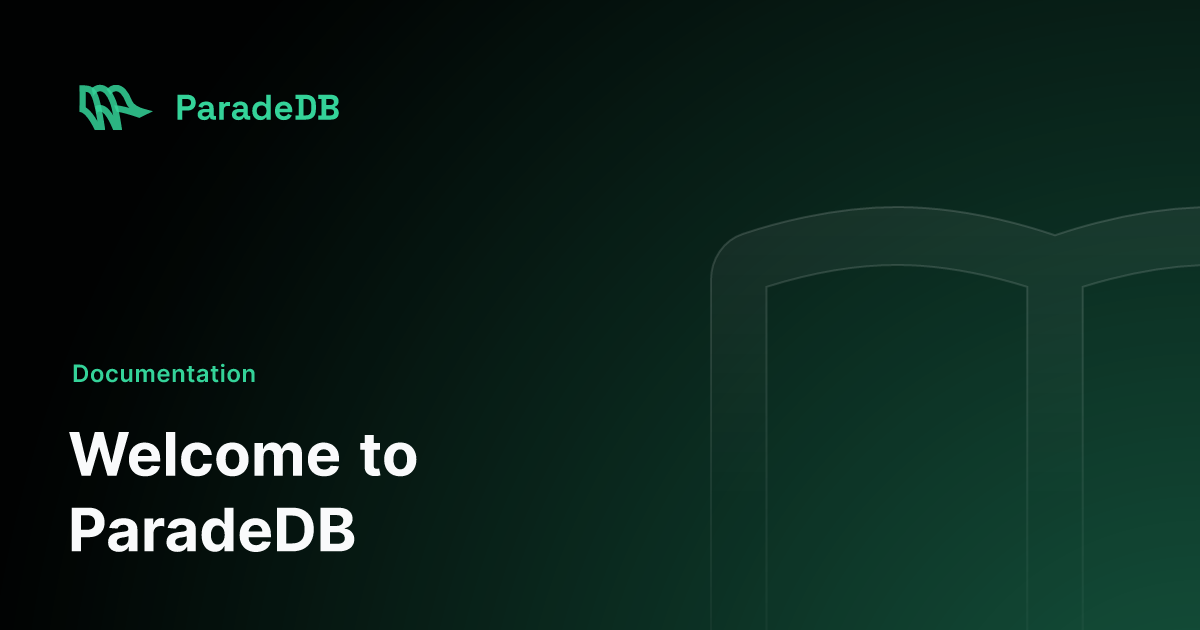
](https://docs.paradedb.com/?ref=sredevops.org)
[
GitHub - paradedb/helm-charts: Helm chart for deploying ParadeDB on Kubernetes
Helm chart for deploying ParadeDB on Kubernetes. Contribute to paradedb/helm-charts development by creating an account on GitHub.

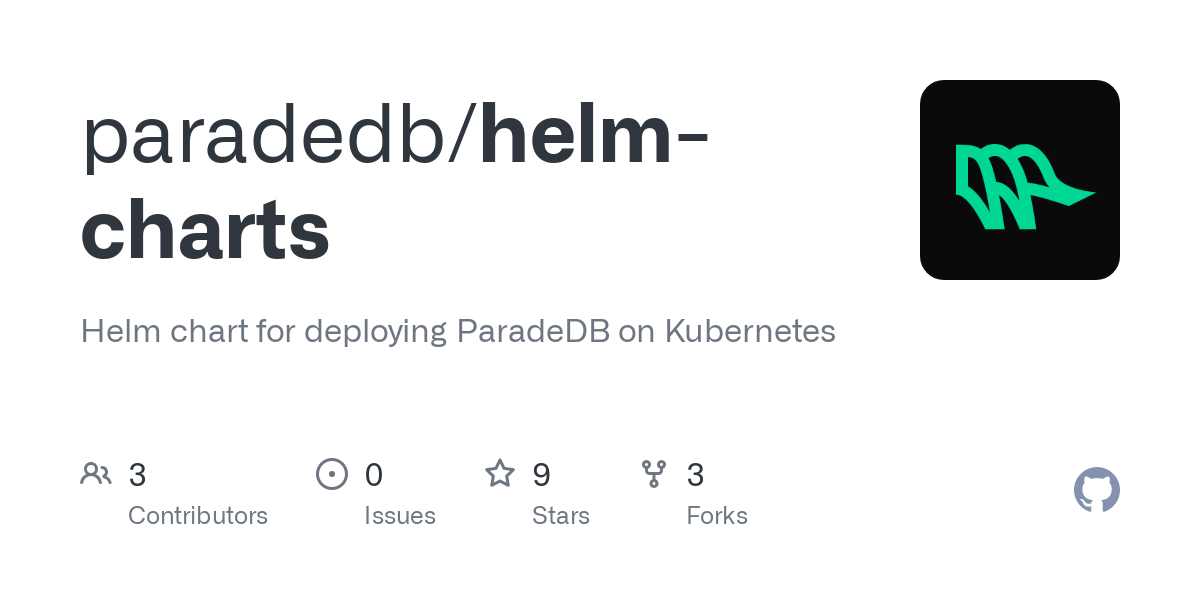
](https://github.com/paradedb/helm-charts?ref=sredevops.org)
[
Slack


](https://join.slack.com/t/paradedbcommunity/shared_invite/zt-2lkzdsetw-OiIgbyFeiibd1DG~6wFgTQ?ref=sredevops.org)
Usage
Using the ParadeDB Helm Chart
First, add the ParadeDB repo to Helm as follows:
helm repo add paradedb https://paradedb.github.io/helm-charts
If you had already added this repository earlier, run helm repo update to retrieve the latest versions of the packages. You can then run helm search repo paradedb to see the charts.
To install the paradedb chart:
helm install paradedb/paradedb
To uninstall the chart:
helm delete
You can also download the chart directly from ArtifactHub.
Using the Bitnami Helm Chart with ParadeDB values.yaml
You can install ParadeDB using Helm and the Bitnami Postgres chart directly. The ParadeDB Helm chart can be configured using the values.yaml file or by specifying values on the command line during installation. To do so, run:
helm install paradedb oci://registry-1.docker.io/bitnamicharts/postgresql --namespace paradedb --create-namespace --values values.yaml
You can configure the values inside the values.yaml file. Check the values.yaml file for more information. For a list of possible configurations, see the Bitnami Postgres chart parameters.
Using the Bitnami Helm Chart with ParadeDB helmfile.yaml
You can install ParadeDB using Helmfile. Once Helmfile is installed, you can download the helmfile.yaml file from this repository and run:
helmfile apply
You can configure values inside the helmfile.yaml. For a list of possible configurations, see the Bitnami Postgres hart parameters
Subscribe to my newsletter
Read articles from Nicolás Georger directly inside your inbox. Subscribe to the newsletter, and don't miss out.
Written by

Nicolás Georger
Nicolás Georger
Cybernetics, Linux and Kubernetes enthusiast. Site Reliability Engineering/DevOps culture, self educated IT professional, social sciences academic background.